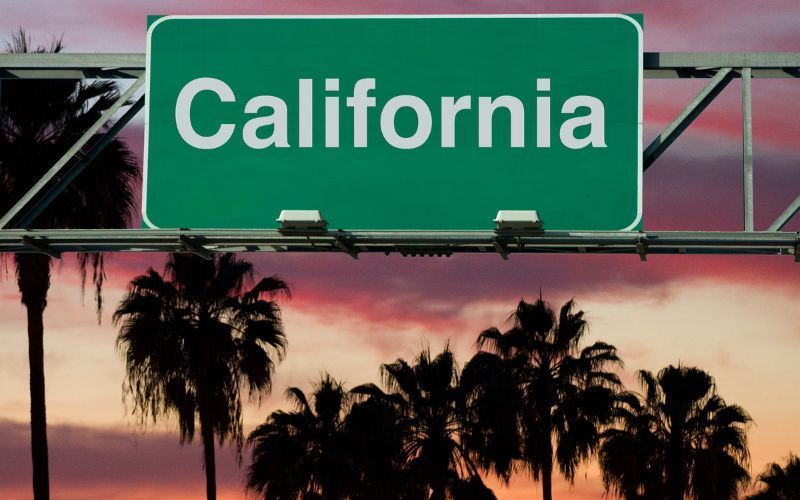Last Updated: July 17, 2024
California's price tag: Navigating the expenses of daily life

Disclaimer: We are not qualified legal or tax professionals and are not giving advice. Always speak with a qualified professional before making any legal or financial decisions.
California is a desirable state with its diverse landscapes, from beaches and deserts to mountains. However, the high cost of living in California can make this dream seem out of reach for some. Understanding the financial implications is crucial for anyone considering making California their home.
In this guide, we will explore the cost of homes, bills, transportation, and groceries. Whether you're planning to move to California or already reside here and want to save money, we have practical tips for you. Let's discover how to make living in California affordable without overspending.
If you'd like to skip the article and speak to a debt specialist, get a free consultation today!
Why is the Cost of Living in California a Popular Topic?
Living expenses in California stretch budgets to their limits, forcing residents to carefully balance their financial priorities. From housing to food, the cost of living in California impacts the most fundamental aspects of daily life, often requiring difficult choices and strategic planning to maintain financial stability.
What Causes the High Cost of Living in California?
Note that not all areas in California have an over-inflated cost of living. However, on average, living in California costs 39% more than the national average. That means that for every dollar spent nationally, it costs $1.39 in California for the same expenses. That adds up with time.
- The California Economy- California has a strong economy. It's the 6th largest economy in the world and the largest economy in the US. This means that there is work and that alone makes the state a desirable location.
- California Housing- The cost to buy or rent a home also contributes to the expense. Housing is 102% higher than the national average. And since this is an average monthly cost, you can pay much more than the national average. Rent in California averages $1,844 per month while the average for homes in California is $550,800, the third highest behind Hawaii and D.C.
- California Utilities- Utility costs are 22% higher than the national average. In part, California's size contributes to the cost as the infrastructure must be larger. Other costs include the generation of energy, maintenance of energy delivery systems, distribution of energy, wildfire mitigation, and public assistance programs. These costs can account for 66 to 77% of each electrical bill.
- Transportation- Transportation is more than just the cost of fuel. It includes parking, auto insurance,, and wear and tear on the vehicle.
- Gas and Diesel- Gas and diesel prices are a big contributor. As of writing, the average gas prices in California range from $4.91 to $5.27 for gas and $5.31 for diesel, making California the most expensive place to buy gas in the nation. Part of the cost is the environmental fees that go into making gas and diesel cleaner to burn. For those of us who remember the dense smogs of the early 1970s, these fees are worth the cleaner air.
- Car Insurance- Car insurance also costs more in California. The state-required minimum averages $636 per year, compared to $622 nationally. Full coverage averages $2,291 compared to $2,014 nationally. This increased cost reflects the number of densely populated and high-crime urban areas.
- Other Factors- Adding to the cost of living are increased costs for housing cost clothing and food expenses (each 10% higher).
Sales Tax and Income Tax Rates
The final contributing factor is taxes, but here the costs are not as severe. The statewide sales tax rate is 7.25%, with local jurisdictions adding district taxes ranging from 0.10% to 1.00%. In some areas, multiple district taxes may apply, increasing the total tax rate. Despite these additions, California's average sales tax rate ranks it in seventh place nationwide.
Why Do People Live in California?

California is an amazing place to live, offering outstanding year-round outdoor recreational opportunities. It boasts cultural diversity and a wide variety of restaurants from every cuisine. For those looking to work in tech or the film industry, California is the place to be. However, living in California can be quite costly. The coastal areas provide sunshine and warmth, while the mountains offer diverse weather. Before making any decisions, let's break down these costs further.
Housing Costs in California
Housing costs in California are among the highest in the nation, with both home prices and rents soaring above national averages. The cost of living in California is further amplified by expensive utilities, as reported in the Energy Electricity Bill Report. While living farther from urban centers can reduce housing expenses, increased transportation costs often offset these savings, creating a challenging financial balancing act for many residents.
Most Expensive Towns, Cities, and Zip Codes
Ten of the nation's 25 most expensive zip codes are in California. These include Atherton, Los Altos Hills, Palo Alto, Ross, Beverly Hills, Hillsborough, Hidden Hills, Woodside, Los Angeles, and Santa Barbara.
The most expensive cities over 10,000 in California are Santa Monica, Beverly Hills, Los Altos, Palo Alto, Burlingame, and Santa Barbara. The most expensive towns under 10,000 are Atherton, Ross, Portola Valley, Newport Coast, Belvedere, and Stinson Beach.
And of course, we cannot forget the most expensive metro area: the Bay Area including San Francisco. This is the most expensive metro area in the nation. The Bay Area is followed by the San Diego metro area and finally by the Los Angeles metro area.
Types of Housing Available
Housing is a major factor in the cost of living in California. Even affordable options are expensive: in November 2021, the average price of a new manufactured home in the U.S. was $111,000, with single-wides averaging $76,400 and double-wides at $139,900, according to the Census Bureau.
Traditional homes are pricier, with Zillow reporting an average home price of $319,485 during that same period. Renters face similar challenges, with monthly rates starting around $1,800. These costs vary based on location, size, and amenities, reflecting California's desirable climate and strong economy.
The California Housing Crisis
California faces a severe housing crisis, leading to increased poverty and the nation's highest homelessness rates. Many working individuals find their wages insufficient for housing costs, perpetuating a cycle of poverty. Living in California has become increasingly challenging as builders prioritize luxury developments over affordable housing, exacerbating the problem and leaving no simple solutions in sight.
The Transportation Costs
Transportation costs in California vary greatly, with urban areas offering public transit options while rural regions often require personal vehicles. Living in California means dealing with the nation's highest gas prices, steep insurance rates in cities, and substantial parking fees. Many residents opt for public transportation or ride-sharing to manage these expenses, which significantly impact the overall cost of living.
Food and Grocery Costs
Despite California's agricultural abundance, groceries remain costly due to transportation expenses and high operational costs for stores. Living in California means contending with these elevated food prices, partly driven by rising minimum wages and the pressure to convert farmland into housing developments. These factors contribute to the overall higher cost of living in the state, challenging residents to find creative ways to manage their food budgets.
Healthcare Costs in California
Healthcare costs in California, while substantial, are not as extreme as other expenses. Residents must manage healthcare costs, which average $10,299 annually per person. The state offers options like Medi-Cal for uninsured residents, emphasizing the importance of health coverage in balancing overall living expenses.
Education Costs
Education costs can be divided into K-12 and college expenses. Sadly for those in K-12, the quality of schools is often based on the neighborhood you can afford to live in and whether or not busing is available and desirable.
California K-12 Costs
California ranks 36th in terms of per capita spending for K-12 education. It also spends only 3.1% of the gross state product on education, giving it a ranking of 41st in the nation. Compare that to 5.4% in Vermont, the highest amount spent. ALEC gives California a C overall for its education system, ranking the state below known scholastic underachievers like Tennessee and Arkansas, and even Louisiana.
California Higher Education
While California's public colleges offer lower tuition fees than the national average, total costs including living expenses can be substantial. Living in California as a student often requires exploring alternatives like vocational schools, apprenticeships, or community colleges to manage educational expenses and mitigate the overall cost of living.
California Taxes
Taxes play a significant role in the cost of living in California, though they're not always as high as perceived. The state sales tax with rates ranging from 7.25% to 10.75%. Interestingly, property tax rates rank 35th, but due to high property values, actual tax payments can be substantial. For instance, the San Jose and San Francisco metro areas have the second and third-highest median property tax costs in the nation at $8,858 and $7,335 respectively. These tax burdens, combined with other living expenses, contribute significantly to the overall cost of living in California, affecting residents' budgets across various income levels.
What do your taxes pay for in California?
Living in California comes with high taxes, but these fund essential services like education, parks, and environmental protection. While contributing to the overall cost of living, this collective funding approach supports critical infrastructure and services that might be more expensive if privately financed, offering residents substantial value for their tax contributions.
Money Saving Tips for California Residents
Here are some money-saving tips that could help California residents navigate the high cost of living:
- Make a budget: Create a budget that includes all your expenses, such as housing, transportation, food, and entertainment. Stick to the budget and adjust it as needed.
- Cut down on transportation costs: Consider carpooling, using public transportation, or biking to save on gas and parking fees.
- Shop smarter: Look for deals and discounts on groceries, clothing, and other essentials. Consider buying generic or store-brand products to save money.
- Consider moving to a more affordable area: If you're struggling to keep up with the cost of living in a particular area, consider moving to a more affordable area.
- Use energy-efficient appliances: Energy-efficient appliances can help you save money on your utility bills.
- Cook at home: Eating out can be expensive, so try cooking meals at home instead. You can also meal prep to save time and money.
- Use credit responsibly: Avoid high-interest credit cards and use credit responsibly to avoid debt.
- Find a roommate: If you're struggling to afford rent or a mortgage, consider finding a roommate to split the cost.
- Take advantage of free entertainment: California has plenty of free activities and events to offer, such as hiking, beach days, and outdoor concerts. Take advantage of them!
Remember, every little bit counts when it comes to saving money. By implementing these tips, you can help ease the burden of the high cost of living in California.
FAQs
Conclusion
California's allure comes with a hefty price tag, as the state consistently ranks among the most expensive places to live in the United States. From sky-high housing costs to pricey transportation and everyday essentials, the cost of living in California can stretch budgets to their breaking point, potentially leading some residents to financial hardship.
Despite its reputation as a paradise, with stunning landscapes and abundant opportunities, the Golden State's economic realities often force individuals and families to make tough choices, such as cutting back on non-essential expenses or reconsidering their housing options.
If you need tips on budgeting, cutting costs, and paying off debt, browse through our blog. If you have too much debt and need help, Pacific Debt Relief can help with a FREE consultation!
*Disclaimer: Pacific Debt Relief explicitly states that it is not a credit repair organization, and its program does not aim to improve individuals' credit scores. The information provided here is intended solely for educational purposes, aiding consumers in making informed decisions regarding credit and debt matters. The content does not constitute legal or financial advice. Pacific Debt Relief strongly advises individuals to seek the counsel of qualified professionals before undertaking any legal or financial actions.
✔ Accredited by Better Business Bureau with BBB A+ rating (4.93 rating and 1678 reviews)
✔ US News and World Reports and Bankrate ranked Pacific Debt Relief as one of “The Best Debt Relief Companies of 2024”
✔ 6.9 star rating by BestCompany.com (over 2379 client reviews)
✔ 4.8 star rating by TrustPilot based (over 1613 verified consumer reviews)
✔ ConsumerAffairs.com Accredited (over 544 verified reviews with an average rating of 5 stars)
✔ A Top 10 Rated Compan by TopTenReviews.com , ConsumersAdvocate.com and Top10debtconsolidation.com
✔ 4.6 star rating by Google (229 client reviews)
✔ 100% rating by SuperMoney (9 client reviews)
Reduce Your Credit Card Debt By Up to Half

BBB Reviews | 4.9/5.0 Rating









 Do Not Sell My Personal Information
Do Not Sell My Personal Information